Breaking News


Popular News

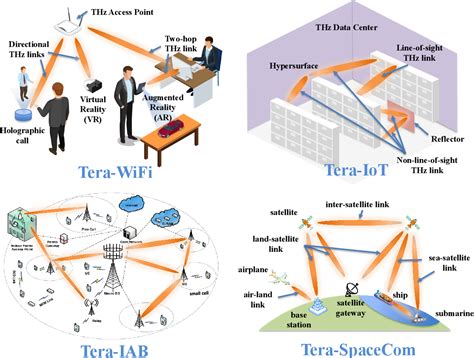
Discover the potential of terahertz frequencies in 6G technology, including applications, advancements, and challenges for future wireless communication.In the ever-evolving world of wireless communication, the introduction of 6G technology is set to revolutionize the way we connect and interact with one another. At the forefront of this advancement is the harnessing of terahertz frequencies, a relatively untapped resource that holds immense potential for the future of wireless communication. In this blog post, we will delve into the world of terahertz frequencies and their role in 6G technology, exploring the advancements that have been made, the challenges that lie ahead, and the applications that are set to redefine the way we use wireless communication. Join us as we unravel the future of terahertz in wireless communication and discover how this cutting-edge technology is set to shape the way we connect in the years to come.
Contents
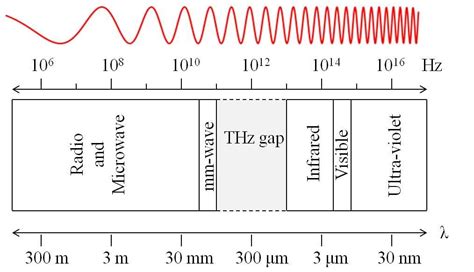
Understanding Terahertz Frequencies
Terahertz frequencies, also known as sub-millimeter waves, refer to the range of electromagnetic waves with frequencies from 0.1 to 10 terahertz. This portion of the electromagnetic spectrum falls between microwaves and infrared light. Terahertz waves have unique properties that make them valuable in various fields, including wireless communication, imaging, and spectroscopy.
One of the key characteristics of terahertz frequencies is their ability to penetrate non-conducting materials such as clothing, paper, and plastic. This property has significant implications for security screening, medical imaging, and industrial inspection. Additionally, terahertz waves are non-ionizing, meaning they do not have enough energy to cause damage to biological tissues, making them safe for certain imaging applications.
Furthermore, terahertz frequencies offer high bandwidth and data rates, which are essential for future wireless communication systems like 6G. With the increasing demand for higher data transfer speeds and lower latency, researchers and engineers are exploring the potential of terahertz waves for next-generation wireless networks. However, there are technical challenges that need to be addressed to fully harness the capabilities of terahertz communication, including signal attenuation, interference, and regulatory considerations.

6G technology is the next generation of wireless communication, promising even faster speeds and lower latency than 5G. As we look towards the future, advancements in 6G technology are already being made, paving the way for revolutionary changes in the way we connect and communicate.
One of the key advancements in 6G technology is the use of terahertz frequencies. Terahertz frequencies, which fall in the range between microwaves and infrared light, have the potential to transmit data at incredibly high speeds, making them ideal for 6G communication. Researchers and engineers are exploring ways to harness these frequencies for use in 6G networks, tackling the technical challenges that come with operating at such high frequencies.
Another area of advancement in 6G technology is in the development of new communication protocols and network architectures. With the ever-increasing demand for connectivity and data exchange, 6G technology aims to create more efficient and reliable communication systems. This includes the use of advanced beamforming techniques, massive MIMO (multiple-input multiple-output) systems, and intelligent network management to optimize the use of available spectrum and resources.
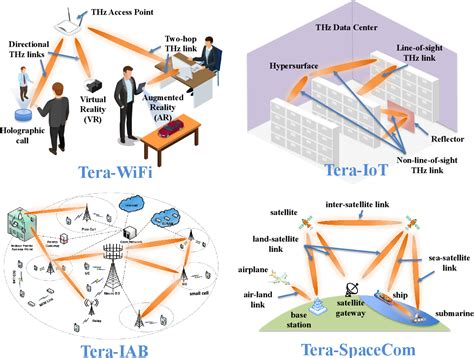
One of the major challenges in terahertz communication is the limited range of transmission. Terahertz frequencies have a very short wavelength, which leads to high free space path loss. This means that the signal strength decreases rapidly as the distance between the transmitter and receiver increases. In addition to this, terahertz waves are also heavily attenuated by atmospheric gases, further limiting their range.
Another challenge is the lack of suitable components for terahertz communication systems. Traditional electronic components, such as transistors and antennas, do not work effectively at terahertz frequencies. This necessitates the development of new materials and devices specifically designed for terahertz communication, which can be a time-consuming and expensive process.
Furthermore, terahertz waves are highly sensitive to environmental factors such as humidity and dust. These factors can distort the signal and degrade the performance of the communication system. Overcoming these environmental challenges is crucial for the widespread adoption of terahertz technology in wireless communication.
| Challenges of Terahertz Communication | Limited range of transmission |
| Lack of suitable components | |
| Sensitivity to environmental factors |
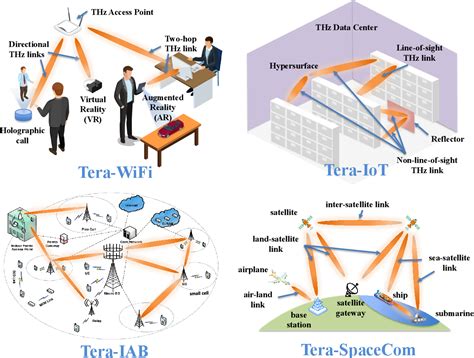
Applications of Terahertz in 6G
Terahertz frequencies, which lie between microwave and infrared frequencies, have shown great potential in 6G wireless communication. The ability of terahertz waves to transmit large amounts of data at incredibly high speeds makes it a promising technology for the future of wireless communication. As we continue to push the boundaries of connectivity and data transfer, terahertz frequencies offer a range of applications that could revolutionize the way we use and interact with wireless technology.
One key application of terahertz in 6G wireless communication is in high-speed data transfer. By harnessing the unique properties of terahertz waves, such as their ability to carry large amounts of data and transmit at ultra-fast speeds, 6G technology can provide significantly faster download and upload speeds than current 5G networks. This would enable seamless streaming of high-definition content, real-time virtual reality experiences, and instant data transfer for a wide range of industries and applications.
Additionally, terahertz frequencies can be used in 6G for advanced imaging and sensing applications. The ability of terahertz waves to penetrate various materials, such as clothing, plastic, and ceramics, makes them ideal for security screening and non-destructive testing. In 6G wireless communication, terahertz imaging and sensing could be utilized in airport security, medical diagnostics, and industrial inspections, enhancing safety and efficiency in a variety of settings.
| Advantages of Terahertz in 6G | Challenges of Implementation |
|---|---|
|
|
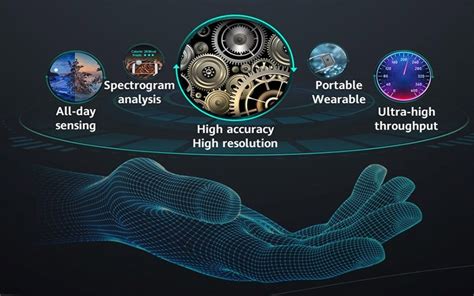
The future of Terahertz in wireless communication holds great potential for revolutionizing the way we connect and transfer data. As we advance towards a 6G era, the utilization of Terahertz frequencies is poised to open up new possibilities and overcome existing limitations in wireless communication.
One of the key advancements in this realm is the potential for Terahertz communication to enable ultra-high-speed data transfer, with speeds far surpassing what is currently achievable with 5G technology. With the anticipated exponential increase in connected devices and data usage, the need for faster and more efficient communication networks has never been more critical.
Furthermore, the applications of Terahertz in 6G technology extend beyond just data transfer. Terahertz frequencies have the potential to enable high-resolution imaging, sensing, and even medical diagnostics, opening up a world of possibilities for the future of wireless communication.

What are terahertz frequencies?
Terahertz frequencies refer to electromagnetic waves with frequencies in the terahertz range, typically between 0.1 to 10 THz.
How can terahertz frequencies be harnessed in 6G wireless communication?
Terahertz frequencies can be used to enable ultra-high-speed wireless communication in 6G networks, offering faster data transmission and higher bandwidth.
What are the potential benefits of using terahertz frequencies in 6G?
The use of terahertz frequencies in 6G wireless communication can lead to advancements in applications such as high-definition video streaming, virtual reality, and IoT devices.
Are there any challenges associated with harnessing terahertz frequencies in 6G?
Yes, challenges include signal propagation limitations due to atmospheric absorption, as well as the development of suitable terahertz transceiver technologies.
How might terahertz frequencies impact the future of wireless communication?
Terahertz frequencies have the potential to revolutionize wireless communication by enabling unprecedented data speeds and connectivity for a wide range of devices and applications.
What research and development efforts are being made in the field of terahertz wireless communication?
There are ongoing efforts to explore terahertz technology for 6G, including research into antenna designs, signal processing techniques, and advancements in terahertz semiconductor components.
In what ways might the integration of terahertz frequencies benefit industries and consumer technology?
Industries such as telecommunications, healthcare, and manufacturing could benefit from terahertz wireless communication, leading to improved efficiency, remote medical diagnostics, and enhanced automation capabilities.